MaryAnn Bernal's Blog, page 219
November 14, 2014
History Trivia - Arthur Tudor of England marries Katherine of Aragon
November 14

565 Emperor Justinian died. Ruler of the Eastern Roman Empire (Byzantium) from 527 to 565, Justinian was dynamic and ambitious, and shared many policy-making decisions with his wife, Theodora. They reclaimed much of the western empire, reformed Roman law, and rebuilt Constantinople.

1501 Arthur Tudor of England married Katherine of Aragon.


565 Emperor Justinian died. Ruler of the Eastern Roman Empire (Byzantium) from 527 to 565, Justinian was dynamic and ambitious, and shared many policy-making decisions with his wife, Theodora. They reclaimed much of the western empire, reformed Roman law, and rebuilt Constantinople.

1501 Arthur Tudor of England married Katherine of Aragon.

Published on November 14, 2014 05:51
November 13, 2014
'Extraordinary' 5,000-Year-Old Human Footprints Discovered
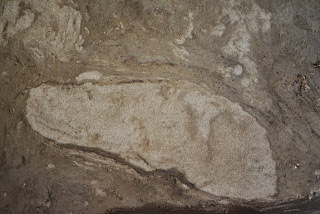 A 5,000-year-old human footprint discovered on the Danish island of Lolland.
A 5,000-year-old human footprint discovered on the Danish island of Lolland.Credit: Lars Ewald Jensen/Museum Lolland-Falster
by Elizabeth Palermo
When a pair of fishermen waded into the frigid waters of the southern Baltic Sea about 5,000 years ago, they probably didn't realize that the shifting seabed beneath their feet was recording their every move. But it was.
The long-lost evidence of that prehistoric fishing trip — two sets of human footprints and some Stone Age fishing gear — was recently discovered in a dried up fjord, or inlet, on the island of Lolland in Denmark. There, archaeologists uncovered the prints alongside a so-called fishing fence, a tool that dates back to around 3,000 B.C.
Archaeologists have found fishing fences before, but the footprints are the first of their kind discovered in Denmark, according to Terje Stafseth, an archaeologist with the Museum Lolland-Falster, who helped excavate the ancient prints. [See photos of the Stone Age human footprints]
"This is really quite extraordinary, finding footprints from humans," Stafseth said in a statement. "Normally, what we find is their rubbish in the form of tools and pottery, but here, we suddenly have a completely different type of trace from the past, footprints left by a human being."
For more than a year, Stafseth and his colleagues have been racing against the clock to collect artifacts and other historical objects from Denmark's past before they disappear forever. In the next year or so, construction is slated to begin on the Fehmarn Belt Fixed Link, an underwater tunnel that will connect Lolland with the German island of Fehmarn. The tunnel will be built with several above-ground facilities that will cover up dried fjords, including the one where the footprints and fishing equipment were found, according to Lars Ewald Jensen, the Museum Lolland-Falster's project manager for the Fehmarn Link project.
Those dried up inlets, as well as other areas of Lolland, are a good place to look for artifacts because these areas weren't always dry, Jensen told Live Science. In fact, the fjords used to be the backdrop for Stone Age people's daily water activities, such as fishing and offering sacrifices to the sea, he said.
But in 1872, the Baltic Sea flooded, killing 80 people on the island of Lolland alone, Jensen said. To protect against future storm surges, a dyke was completed in 1877 that spans about 37 miles (60 kilometers) of Lolland's southern coast. The project left the fjords dry.
The Stone Age footprints were likely formed sometime between 5,000 B.C. and 2,000 B.C., Jensen said. At that time, the water level of the Baltic Sea was rising due to melting glaciers in northern Europe. Also at that time, prehistoric people were using these inlets as fishing grounds.
These individuals constructed elaborate traps, called fishing fences, to catch their prey. The wooden fences were built in sections several feet wide — thin switches of hazel suspended between two larger sticks — and the sections were lined up consecutively to form one long, continuous trap. The trap was placed in the shallow water of the fjord, which would be flooded with the incoming tide, the archaeologists said. When the fishermen wanted to move their gear, they would pluck the sections of the fence from the claylike floor of the fjord and move the whole apparatus to a new location. [Top 10 Mysteries of the First Humans]
"What seems to have happened was that at some point they were moving out to the [fish fence], perhaps to recover it before a storm," Jensen said. "At one of the posts, there are footprints on each side of the post, where someone had been trying to remove it from the sea bottom."
The footprints around the post, as well as several others in the general area, were likely preserved in time thanks to the stormy weather. As the fishermen struggled to move their gear, their feet sunk deeper into the floor of the fjord and were covered by sand stirred up by the incoming ocean surge. The recovered footprints feature fine layers of mud and sand, neatly positioned one atop the other, Jensen said.
The archaeologists said the footprints must have been made by two different people, since one set of prints is significantly smaller than the other. Jensen and his team are now making imprints, or flat molds, of the footprints to preserve these ancient signs of life.
In addition to the human tracks, the team uncovered several skulls belonging to domestic and wild animals on the beach near the fjord. The researchers said the skulls were likely part of offerings made by local farmers, who inhabited the region from around 4,000 B.C.
"They put fragments of skulls from different kinds of animals [on the sea floor], and then around that they put craniums from cows and sheep," Jensen said. "At the outermost of this area, they put shafts from axes. All in all, it covers about 70 square meters [83 square yards]. It's rather peculiar."
Live Science

Published on November 13, 2014 14:52
History Trivia - Ethelred the Unready (Ethelred II) orders the St Brice's Day Massacre
November 13

354 Saint Augustine was born. He was one of the earliest Christian theologians, and author of The City of God, and, Confessions, two of the best-known religious writings of all time.

1002 Ethelred the Unready (Ethelred II) ordered the St Brice's Day Massacre - the murder of all Danes in England.
[image error]
1093, Malcolm III MacDuncan, King of Scots, was killed while laying siege to Alnwick in an invasion of England. He was succeeded by his brother Donald Bane.

1553 English Lady Jane Grey and Bishop Cranmer were accused of high treason.

1642 First English Civil War: Battle of Turnham Green – the Royalist forces withdrew in the face of the Parliamentarian army and failed to take London.


354 Saint Augustine was born. He was one of the earliest Christian theologians, and author of The City of God, and, Confessions, two of the best-known religious writings of all time.

1002 Ethelred the Unready (Ethelred II) ordered the St Brice's Day Massacre - the murder of all Danes in England.
[image error]
1093, Malcolm III MacDuncan, King of Scots, was killed while laying siege to Alnwick in an invasion of England. He was succeeded by his brother Donald Bane.

1553 English Lady Jane Grey and Bishop Cranmer were accused of high treason.

1642 First English Civil War: Battle of Turnham Green – the Royalist forces withdrew in the face of the Parliamentarian army and failed to take London.

Published on November 13, 2014 04:50
November 12, 2014
9,000-year-old man yields secrets of America's earliest inhabitants
 Kennewick Man may have more secrets to spill, according to top anthropologists. (Smithsonian)
Kennewick Man may have more secrets to spill, according to top anthropologists. (Smithsonian)By Dan Springer
Eighteen years after his near-complete skeletal remains were found along the bank of the Columbia River in eastern Washington, Kennewick Man is finally telling his 9,000-year-old story -- and reshaping our knowledge of how North America was first populated by humans.
The prehistoric man's bones have yielded clues about his diet and lineage, convincing forensic anthropologist Doug Owsley of the Smithsonian Museum of Natural History that he was an immigrant who had come a long way before his death. Based on his diet of seals and other marine mammals and the shape of his skull, the theory is he and his relatives traveled in boats from Polynesia, along the coasts of Japan, Russia, Alaska, Canada and eventually up the Columbia River.
“We’re realizing there are people getting here much earlier than we thought, and coming using different modes of transportation,” Owsley said.
“We’re realizing there are people getting here much earlier than we thought, and coming using different modes of transportation.”- Doug Owsley, Smithsonian Museum of Natural HistoryThe dramatic scientific discovery almost didn’t happen because of the federal government. The Army Corps of Engineers tried to give the bones to local tribes for re-burial before they could be studied, but a lawsuit filed by several scientists blocked the transfer. The Corps did manage to prevent any further finds around where the bones were discovered, dumping 2 million pounds of dirt and planting several thousand trees on top of Kennewick Man’s burial site.
U.S. Magistrate Judge John Jelderks, who heard the scientists' case, wrote in his opinion the Army Corps of Engineers had ‘prejudged the outcome’ in the interest of fostering a climate of cooperation with the tribes.
The Army Corps of Engineers was enforcing NAGPRA, the Native American Graves Protection and Repatriation Act. The law, which was passed in 1990, established rules for the handling of Native American remains. But Owsley and other experts argued Kennewick Man was not a Native American. He was a Polynesian who would have had no cultural or genetic connection to any Native American.
Still, the Army Corp of Engineers is defending its effort to hand the bones over to the tribes.
Related Image
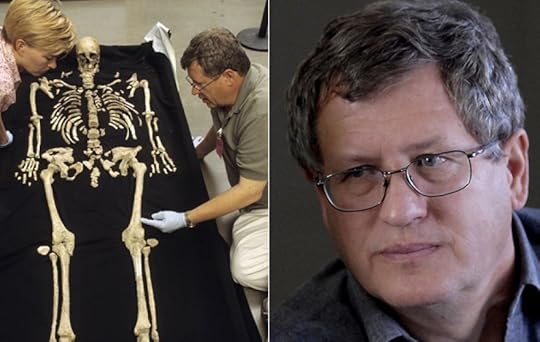 Owsley, (r.), says the nearly intact skeleton changed what we knew about man's first arrival in America. (Smithsonian)
Owsley, (r.), says the nearly intact skeleton changed what we knew about man's first arrival in America. (Smithsonian)“We are very sensitive to the facts the tribes view the remains as being very significant,” said Jennifer Richman of the U.S. Army Corps of Engineers in Portland, Ore. “The tribes view the remains as their ancestor.”
Jelderks, and later the 9th Circuit Court of Appeals, disagreed with the government and demanded the Army Corps of Engineers allow the bones to be studied. Owsley ran tests on Kennewick Man over a 16-day period.
The Umatilla Tribe continues to fight.
“We maintain, and nothing has been published to date to refute, that the Ancient One is one of our ancestors,” the tribe wrote in a statement.
Anthropologists say the tribes are just trying to flex political muscle and the Corps capitulated.
“That law is supposed to be a compromise between the scientists and Native Americans, not just a one-sided law that hands everything over,” said James Chatters, the first forensic anthropologist to study Kennewick Man.
Kennewick Man is currently being kept away from the public in Seattle’s Burke Museum. Scientists are required to petition the Army Corps of Engineers to run additional tests, which they say they’ll do. They believe Kennewick Man has a lot more to tell them about the history of mankind.
Fox News

Published on November 12, 2014 14:47
Bone Fragments Found in Greek Tomb from Era of Alexander the Great
by Megan Gannon
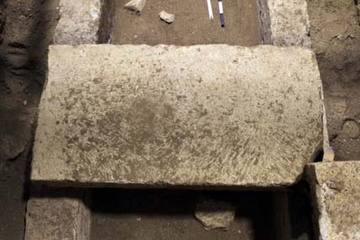
 Fragments of bone and glass as well as metal nails were discovered inside this tomb at Amphipolis.
Fragments of bone and glass as well as metal nails were discovered inside this tomb at Amphipolis.
Credit: Greek Ministry of CultureSkeletal remains have been discovered inside a lavish burial complex in Greece that dates back to the era of Alexander the Great. The tomb is thought to be the largest of its kind in the Greek world, and the bone fragments could help solve the mystery of who was buried inside.
Excitement has been building for months as archaeologists venture deeper inside the 4th century B.C. burial complex in Amphipolis, a city in Greece's central Macedonia region, located about 65 miles (105 kilometers) east of Thessaloniki. The excavators have found sphinxes, a stunning mosaic floor and artfully crafted female statues standing guard at an interior doorway. But until now, they had not found any trace of a body.
The Greek Ministry of Culture announced today (Nov. 12) that fragmentary skeletal remains were discovered beneath the floor in the tomb's third chamber. [See Photos of the Alexander-Era Tomb's Excavation]

[image error] The burial vault was buried under the floor of the third chamber in the tomb.
The burial vault was buried under the floor of the third chamber in the tomb.
Credit: Greek Ministry of Culture
View full size imageThe body had apparently been placed within a wooden coffin inside a limestone vault. The archaeologists also discovered metal nails and fragments of glass scattered among the bits of bone.
The excavators, led by Greek archaeologist Katerina Peristeri, have been trying to stave off speculation about who might be buried inside the tomb. But, they said today the complex was probably too expensive to have been bankrolled by a single individual. The size and rich details of the tomb suggest it must have been built for a "prominent figure," according to a statement from the Greek Ministry of Culture.
In September, the head of the Ministry of Culture, Kostas Tasoulas, said it was highly unlikely that the Amphipolis tomb belonged to Alexander the Great himself, but he later retreated from that statement.
"There are no written documents on where Alexander the Great is buried, this is what I said, and not that the tomb does not belong to Alexander the Great," Tasoulas told a radio program, according to the Greek Reporter.
Alexander the Great died in Babylon (present-day Iraq) in 323 B.C. Against his last wishes to be thrown into a river, Alexander's generals eventually buried him in Egypt, but the exact location of his final resting place has been lost to history, Archaeology magazine reported.
Excavations have been going on at the so-called Kasta Hill site since 2012, but the dig gained widespread attention this past August after a pair of broken sphinxes were revealed at the entrance to the tomb, which is enclosed by a marble wall that runs about 1,600 feet (490 meters) around the perimeter. Among the more remarkable finds from the excavation was a colorful mosaic floor showing a scene from Greek mythology: the goddess Persephone being abducted by Hades and taken to the underworld.
Live Science


 Fragments of bone and glass as well as metal nails were discovered inside this tomb at Amphipolis.
Fragments of bone and glass as well as metal nails were discovered inside this tomb at Amphipolis.Credit: Greek Ministry of CultureSkeletal remains have been discovered inside a lavish burial complex in Greece that dates back to the era of Alexander the Great. The tomb is thought to be the largest of its kind in the Greek world, and the bone fragments could help solve the mystery of who was buried inside.
Excitement has been building for months as archaeologists venture deeper inside the 4th century B.C. burial complex in Amphipolis, a city in Greece's central Macedonia region, located about 65 miles (105 kilometers) east of Thessaloniki. The excavators have found sphinxes, a stunning mosaic floor and artfully crafted female statues standing guard at an interior doorway. But until now, they had not found any trace of a body.
The Greek Ministry of Culture announced today (Nov. 12) that fragmentary skeletal remains were discovered beneath the floor in the tomb's third chamber. [See Photos of the Alexander-Era Tomb's Excavation]

[image error]
 The burial vault was buried under the floor of the third chamber in the tomb.
The burial vault was buried under the floor of the third chamber in the tomb.Credit: Greek Ministry of Culture
View full size imageThe body had apparently been placed within a wooden coffin inside a limestone vault. The archaeologists also discovered metal nails and fragments of glass scattered among the bits of bone.
The excavators, led by Greek archaeologist Katerina Peristeri, have been trying to stave off speculation about who might be buried inside the tomb. But, they said today the complex was probably too expensive to have been bankrolled by a single individual. The size and rich details of the tomb suggest it must have been built for a "prominent figure," according to a statement from the Greek Ministry of Culture.
In September, the head of the Ministry of Culture, Kostas Tasoulas, said it was highly unlikely that the Amphipolis tomb belonged to Alexander the Great himself, but he later retreated from that statement.
"There are no written documents on where Alexander the Great is buried, this is what I said, and not that the tomb does not belong to Alexander the Great," Tasoulas told a radio program, according to the Greek Reporter.
Alexander the Great died in Babylon (present-day Iraq) in 323 B.C. Against his last wishes to be thrown into a river, Alexander's generals eventually buried him in Egypt, but the exact location of his final resting place has been lost to history, Archaeology magazine reported.
Excavations have been going on at the so-called Kasta Hill site since 2012, but the dig gained widespread attention this past August after a pair of broken sphinxes were revealed at the entrance to the tomb, which is enclosed by a marble wall that runs about 1,600 feet (490 meters) around the perimeter. Among the more remarkable finds from the excavation was a colorful mosaic floor showing a scene from Greek mythology: the goddess Persephone being abducted by Hades and taken to the underworld.
Live Science

Published on November 12, 2014 14:39
History Trivia - Canute the Great dies
November 12
[image error]
607 Boniface III died. Before he became Pope, Boniface went as a legate to Constantinople and obtained from the emperor Phocas an edict that recognized the See of Rome as the head of all the churches.

1035 Canute the Great died. King Canute I of England was also King Canute II of Denmark and King Canute of Norway, and was known as "the Great" because of the empire he built in Britain and Scandinavia.
[image error]
1276 Suspicious of the intentions of Llywelyn ap Gruffydd, the Prince of Wales, English King Edward I resolves to invade Wales.
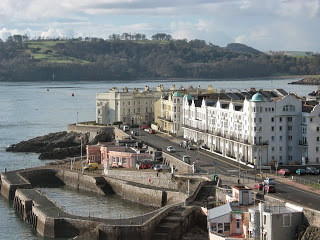
1439 Plymouth, England, became the first town incorporated by the English Parliament.

[image error]
607 Boniface III died. Before he became Pope, Boniface went as a legate to Constantinople and obtained from the emperor Phocas an edict that recognized the See of Rome as the head of all the churches.

1035 Canute the Great died. King Canute I of England was also King Canute II of Denmark and King Canute of Norway, and was known as "the Great" because of the empire he built in Britain and Scandinavia.
[image error]
1276 Suspicious of the intentions of Llywelyn ap Gruffydd, the Prince of Wales, English King Edward I resolves to invade Wales.

1439 Plymouth, England, became the first town incorporated by the English Parliament.

Published on November 12, 2014 06:04
November 11, 2014
Diane Turner - London Rocks - 11-11-2014
Published on November 11, 2014 15:35
'Project Recover' Searches for Long-Lost World War II Heroes
by Kelly Dickerson
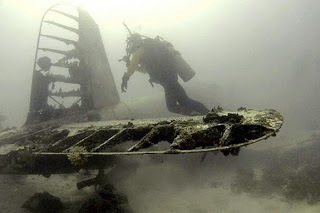 Researchers are using underwater robots to search for the wrecks of World War II planes.
Researchers are using underwater robots to search for the wrecks of World War II planes.
Credit: University of Delaware
Underwater robots are helping researchers and volunteers discover the watery resting places of soldiers who have been missing since World War II.
The initiative, called "Project Recover," uses autonomous robots equipped with sonar and cameras to scour the ocean floor. In March, the team found two World War II planes that had crashed over the Pacific.
"It was certainly a humbling experience, just knowing you're the first person to reach this wreck in 70 years," Eric Terrill, a researcher at the Scripps Institution of Oceanography who works with Project Recover, told Live Science. [See photos of the World War II plane wrecks]
The project concentrates its efforts around the Republic of Palau, a chain of islands in the Western Pacific, where some of the most intense fighting during the Pacific campaign of World War II happened.
In one month alone, there were more than 5,000 casualties during the fight for the island of Peleliu, which makes up part of the Palau chain. Historians estimate that more than 30 U.S. carriers, aircraft and sunken landing craft remain missing somewhere in the waters off Palau. The Project Recover team thinks there are 70 to 80 soldiers who potentially could be recovered from within those vessels.
"The only thing worse than going off to participate in a war is, going off to participate in a war and never getting to come home," Casey Doyle, a volunteer who works with the project, said in a video produced by camera maker GoPro, one of the project's sponsors.
But how does anyone track down a plane that crashed in the open ocean more than 70 years ago?
The hunt begins
Back in 2010, Terrill and Mark Moline, director of the School of Marine Science and Policy at the University of Delaware, started taking annual treks to the Palau island chain to study currents and map the flow of water around the islands. The researchers were using sophisticated technology to research the influence of super typhoons on coral reefs and to study how climate change impacts islands.
On one of these treks, they encountered Patrick Scannon, the founder of the nonprofit group BentProp. BentProp's mission is "to repatriate every American service member who has not come home."
The organization relies on historical data and firsthand accounts for its recovery work. Since the early 1990s, Scannon and a group of volunteers have been slowly filling in ocean floor maps based on data they collect from dives.
It was clear that it was tedious work, Moline said, and that's when he and Terrill realized they could help. Combining BentProp's historical data with Moline and Terrill's more sophisticated technology and detailed maps made it much easier to track where currents may have laid to rest long-lost World War II vessels. The two groups joined forces in 2012 and created Project Recover.
Searching for veterans
Project Recover uses a fleet of autonomous underwater vehicles (AUVs) to sweep the ocean floor around Palau. Each underwater robot is equipped with sonar readers and cameras that capture images of things like coral reefs, marine life and possibly missing World War II vessels and aircraft.
The torpedo-shaped robots allow the group to create detailed maps of the seafloor. Each underwater drone shoots out sound waves that reach 150 feet (46 meters) on either side. The sound waves bounce back at different strengths and frequencies, depending on what kind of material they collide with, Moline said.
"Some of these aircraft hit the water [at] around 150 mph [240 km/h], so some of them don't look like airplanes anymore," Moline told Live Science. "They look very similar to coral reefs."
But when the sonar hits metal instead of sediment or reef, it bounces back with a very different intensity, Moline said. The autonomous robots can skim along the bottom and produce higher-resolution images than if they were being towed through the open water, behind a boat.
Once the robots map out a promising location, the team sends in divers with handheld sonar devices to conduct a more thorough search of the area.
Underwater recovery
In March, after poring over national archives data, interviews with veterans and ocean current and plane trajectory analyses, the team found a World War II Avenger bomber that had been missing for 70 years. A Palau elder remembered seeing the plane go down. One of the soldiers made it out, but the aircraft went down with two men still inside, the researchers said.
"We were approaching what is hallowed ground," Terrill said while recounting the experience in the GoPro video. "Two of our guys are still on board that aircraft."
Sonar images revealed another sunken aircraft — a so-called F6F Hellcat — nearby.
Project Recover doesn't actually touch the wrecks, Moline said. Following the discovery, the researchers submitted reports for both recovered vessels to the U.S. Navy. In total, there are approximately 78,000 missing servicemen from World War II, with potential recovery sites all around the globe. Navy personnel review these reports, decide which ones are retrievable and then notify families if they are able to identify the veterans.
Moline said there seems to be a lot of interest in the two sites discovered by Project Recover, since the researchers were able to submit such detailed reports.
Terrill said that, with so many soldiers missing in action, there's clearly a need to develop this kind of search-and-recovery method, and the project is acting as a test bed for search technologies. The next Project Recover mission will launch in March 2015, and the group has four or five promising search sites to target.
"You spend so much time and effort putting together a forensic case file that when you finally find something, it's really rewarding," Moline said. "But there's a pause, because you know you've just found some people that have sacrificed their lives — so there's mixed emotions when do you find it."

Live Science
 Researchers are using underwater robots to search for the wrecks of World War II planes.
Researchers are using underwater robots to search for the wrecks of World War II planes.Credit: University of Delaware
Underwater robots are helping researchers and volunteers discover the watery resting places of soldiers who have been missing since World War II.
The initiative, called "Project Recover," uses autonomous robots equipped with sonar and cameras to scour the ocean floor. In March, the team found two World War II planes that had crashed over the Pacific.
"It was certainly a humbling experience, just knowing you're the first person to reach this wreck in 70 years," Eric Terrill, a researcher at the Scripps Institution of Oceanography who works with Project Recover, told Live Science. [See photos of the World War II plane wrecks]
The project concentrates its efforts around the Republic of Palau, a chain of islands in the Western Pacific, where some of the most intense fighting during the Pacific campaign of World War II happened.
In one month alone, there were more than 5,000 casualties during the fight for the island of Peleliu, which makes up part of the Palau chain. Historians estimate that more than 30 U.S. carriers, aircraft and sunken landing craft remain missing somewhere in the waters off Palau. The Project Recover team thinks there are 70 to 80 soldiers who potentially could be recovered from within those vessels.
"The only thing worse than going off to participate in a war is, going off to participate in a war and never getting to come home," Casey Doyle, a volunteer who works with the project, said in a video produced by camera maker GoPro, one of the project's sponsors.
But how does anyone track down a plane that crashed in the open ocean more than 70 years ago?
The hunt begins
Back in 2010, Terrill and Mark Moline, director of the School of Marine Science and Policy at the University of Delaware, started taking annual treks to the Palau island chain to study currents and map the flow of water around the islands. The researchers were using sophisticated technology to research the influence of super typhoons on coral reefs and to study how climate change impacts islands.
On one of these treks, they encountered Patrick Scannon, the founder of the nonprofit group BentProp. BentProp's mission is "to repatriate every American service member who has not come home."
The organization relies on historical data and firsthand accounts for its recovery work. Since the early 1990s, Scannon and a group of volunteers have been slowly filling in ocean floor maps based on data they collect from dives.
It was clear that it was tedious work, Moline said, and that's when he and Terrill realized they could help. Combining BentProp's historical data with Moline and Terrill's more sophisticated technology and detailed maps made it much easier to track where currents may have laid to rest long-lost World War II vessels. The two groups joined forces in 2012 and created Project Recover.
Searching for veterans
Project Recover uses a fleet of autonomous underwater vehicles (AUVs) to sweep the ocean floor around Palau. Each underwater robot is equipped with sonar readers and cameras that capture images of things like coral reefs, marine life and possibly missing World War II vessels and aircraft.
The torpedo-shaped robots allow the group to create detailed maps of the seafloor. Each underwater drone shoots out sound waves that reach 150 feet (46 meters) on either side. The sound waves bounce back at different strengths and frequencies, depending on what kind of material they collide with, Moline said.
"Some of these aircraft hit the water [at] around 150 mph [240 km/h], so some of them don't look like airplanes anymore," Moline told Live Science. "They look very similar to coral reefs."
But when the sonar hits metal instead of sediment or reef, it bounces back with a very different intensity, Moline said. The autonomous robots can skim along the bottom and produce higher-resolution images than if they were being towed through the open water, behind a boat.
Once the robots map out a promising location, the team sends in divers with handheld sonar devices to conduct a more thorough search of the area.
Underwater recovery
In March, after poring over national archives data, interviews with veterans and ocean current and plane trajectory analyses, the team found a World War II Avenger bomber that had been missing for 70 years. A Palau elder remembered seeing the plane go down. One of the soldiers made it out, but the aircraft went down with two men still inside, the researchers said.
"We were approaching what is hallowed ground," Terrill said while recounting the experience in the GoPro video. "Two of our guys are still on board that aircraft."
Sonar images revealed another sunken aircraft — a so-called F6F Hellcat — nearby.
Project Recover doesn't actually touch the wrecks, Moline said. Following the discovery, the researchers submitted reports for both recovered vessels to the U.S. Navy. In total, there are approximately 78,000 missing servicemen from World War II, with potential recovery sites all around the globe. Navy personnel review these reports, decide which ones are retrievable and then notify families if they are able to identify the veterans.
Moline said there seems to be a lot of interest in the two sites discovered by Project Recover, since the researchers were able to submit such detailed reports.
Terrill said that, with so many soldiers missing in action, there's clearly a need to develop this kind of search-and-recovery method, and the project is acting as a test bed for search technologies. The next Project Recover mission will launch in March 2015, and the group has four or five promising search sites to target.
"You spend so much time and effort putting together a forensic case file that when you finally find something, it's really rewarding," Moline said. "But there's a pause, because you know you've just found some people that have sacrificed their lives — so there's mixed emotions when do you find it."

Live Science
Published on November 11, 2014 15:21
1,000-Year-Old Tomb Reveals Murals, Stars & Poetry
by Owen Jarus
 A 1,000-year-old tomb with a ceiling decorated with stars and constellations has been discovered in northern China.
A 1,000-year-old tomb with a ceiling decorated with stars and constellations has been discovered in northern China.
Found not far from a modern day railway station, the circular tomb has no human remains but instead has murals which show vivid scenes of life. "The tomb murals mainly depict the daily domestic life of the tomb occupant," and his travels with horses and camels, a team of researchers wrote in their report on the tomb recently published in the journal Chinese Cultural Relics.
On the east wall, people who may have served as attendants to the tomb's occupant are shown holding fruit and drinks. There is also a reclining deer, a crane, bamboo trees, a crawling yellow turtle and a poem. The poem reads in part, "Time tells that bamboo can endure cold weather. Live as long as the spirits of the crane and turtle."
The tomb also contains images of what appear to be the occupant's pets. On the north wall, there is "a black and white cat with a red ribbon on its neck and a silk-strip ball in its mouth," the researchers wrote, with the same scene also showing "a black and white dog with a red ribbon on its neck and a curved tail." Male and female attendants are shown beside the cat and dog, with an empty bed lying between the animals. [Photos: 1,000 Year Old Tomb Found in China]
The tomb's ceiling contains stars painted in a bright red color. The "completed constellations are formed by straight lines connecting the stars in relevant shapes and forms," the researchers wrote.
Archaeologists also found a small statue of the occupant. The statue is 3.1 feet (0.94 meters) tall, and shows a smiling man who is wearing a long black robe while sitting cross-legged on a platform. It could be that the statue was used as a substitute for the body in the burial, the researchers said, noting this practice wasn’t unusual among Buddhists at the time.
The tomb was found in Datong City and was excavated in 2011 by a team from the Datong Municipal Institute of Archaeology. The researchers reported their finds, in Chinese, in the journal Wenwu, and their article was recently translated into English and published in Chinese Cultural Relics. The excavation team was led by Junxi Liu.
Who was he?
The tomb was robbed in the past and the name of the tomb owner has not survived. Judging by his statue, and the decoration of his tomb, researchers said it's likely that the occupant was a Han Chinese man of some rank and wealth.
At the time he lived, about 1,000 years ago, the area where his tomb is located was controlled by the Liao Dynasty (sometimes called the Liao Empire). This dynasty was controlled by people called the Khitan, who held territory in modern- day Mongolia, northern China and parts of Russia.
Historical records indicate that the Khitan ruled a multicultural empire that incorporated Han Chinese into the government.
"The Khitan system of rule worked on a principle of dual administration, with its nomadic, pastoral, and mostly Khitan subjects in the north under the northern government and its agricultural, sedentary, and largely Chinese and Bohai subjects in the south under the southern government," writes Nicola Di Cosmo, a historian at the Institute for Advanced Study, in a chapter of the book "Gilded Splendor: Treasures of China's Liao Empire" (Asia Society, 2007).
Although we may never know the identity of the tomb occupant, or the position he held, this unknown man has left behind a colorful tomb full of life.
Chinese Cultural Relics is a new journal that translates Chinese-language articles, which were originally published in the journal Wenwu, into English. The mural tomb was included in its inaugural issue.
Live Science

 A 1,000-year-old tomb with a ceiling decorated with stars and constellations has been discovered in northern China.
A 1,000-year-old tomb with a ceiling decorated with stars and constellations has been discovered in northern China.Found not far from a modern day railway station, the circular tomb has no human remains but instead has murals which show vivid scenes of life. "The tomb murals mainly depict the daily domestic life of the tomb occupant," and his travels with horses and camels, a team of researchers wrote in their report on the tomb recently published in the journal Chinese Cultural Relics.
On the east wall, people who may have served as attendants to the tomb's occupant are shown holding fruit and drinks. There is also a reclining deer, a crane, bamboo trees, a crawling yellow turtle and a poem. The poem reads in part, "Time tells that bamboo can endure cold weather. Live as long as the spirits of the crane and turtle."
The tomb also contains images of what appear to be the occupant's pets. On the north wall, there is "a black and white cat with a red ribbon on its neck and a silk-strip ball in its mouth," the researchers wrote, with the same scene also showing "a black and white dog with a red ribbon on its neck and a curved tail." Male and female attendants are shown beside the cat and dog, with an empty bed lying between the animals. [Photos: 1,000 Year Old Tomb Found in China]
The tomb's ceiling contains stars painted in a bright red color. The "completed constellations are formed by straight lines connecting the stars in relevant shapes and forms," the researchers wrote.
Archaeologists also found a small statue of the occupant. The statue is 3.1 feet (0.94 meters) tall, and shows a smiling man who is wearing a long black robe while sitting cross-legged on a platform. It could be that the statue was used as a substitute for the body in the burial, the researchers said, noting this practice wasn’t unusual among Buddhists at the time.
The tomb was found in Datong City and was excavated in 2011 by a team from the Datong Municipal Institute of Archaeology. The researchers reported their finds, in Chinese, in the journal Wenwu, and their article was recently translated into English and published in Chinese Cultural Relics. The excavation team was led by Junxi Liu.
Who was he?
The tomb was robbed in the past and the name of the tomb owner has not survived. Judging by his statue, and the decoration of his tomb, researchers said it's likely that the occupant was a Han Chinese man of some rank and wealth.
At the time he lived, about 1,000 years ago, the area where his tomb is located was controlled by the Liao Dynasty (sometimes called the Liao Empire). This dynasty was controlled by people called the Khitan, who held territory in modern- day Mongolia, northern China and parts of Russia.
Historical records indicate that the Khitan ruled a multicultural empire that incorporated Han Chinese into the government.
"The Khitan system of rule worked on a principle of dual administration, with its nomadic, pastoral, and mostly Khitan subjects in the north under the northern government and its agricultural, sedentary, and largely Chinese and Bohai subjects in the south under the southern government," writes Nicola Di Cosmo, a historian at the Institute for Advanced Study, in a chapter of the book "Gilded Splendor: Treasures of China's Liao Empire" (Asia Society, 2007).
Although we may never know the identity of the tomb occupant, or the position he held, this unknown man has left behind a colorful tomb full of life.
Chinese Cultural Relics is a new journal that translates Chinese-language articles, which were originally published in the journal Wenwu, into English. The mural tomb was included in its inaugural issue.
Live Science

Published on November 11, 2014 15:15
Bronze Bell from Long-Lost Arctic Shipwreck Revealed
 by Megan Gannon
by Megan GannonDivers recovered a bronze bell from the wreck of the HMS Erebus, a British ship that was missing for nearly 170 years after an ill-fated expedition to the Canadian Arctic.
In 1845, British Royal Navy officer and explorer John Franklin led more than 100 men on a quest to find a Northwest Passage connecting the Atlantic and Pacific oceans. But they never completed their mission; in 1846, their ships — the HMS Erebus and HMS Terror — became trapped in ice near King William Island in northern Canada.
The weeks and months that followed were grim. Many of the crewmembers died of some combination of exposure, starvation, scurvy and lead poisoning. Some may have resorted to cannibalism. Search parties looking for the missing crew turned up empty, though a few graves were later found. The fate of the ships, meanwhile, remained a mystery until this past September. [See photos of the ship's bell]
Since 2008, Parks Canada led six searches for the sunken vessels. The agency finally succeeded this year, after capturing sonar images of a wreck in the eastern part of the Queen Maud Gulf.
Underwater archaeologists dove to the shipwreck seven times over two days during the so-called 2014 Victoria Strait Expedition. They took photos and measurements of the wreck, and during the last dive, they recovered the bell. After reviewing the data they collected during that intensive investigation, Parks Canada officials felt confident in saying they had found the HMS Erebus.
"The locating and identifying of this ship goes a long way solving one of Canada's greatest historical mysteries," Canadian Prime Minister Stephen Harper said in a statement at the time.
The bell is clearly marked with the Royal Navy's broad arrow symbol, and the date 1845 is also embossed on its surface.
200-Year-Old Bottle of Seltzer Found in Shipwreck"Like the chiming of a clock, the bell would have been struck every half hour both day and night to announce the march of time and to signal the changing of the crew's watches," Parks Canada representatives said in a statement.
Though the artifact is in relatively good condition, it will have to undergo at least 18 months of conservation. The bell is currently soaking in a bath of distilled water, and its chemistry is being closely monitored, according to Parks Canada.
Discovery News

Published on November 11, 2014 15:08




